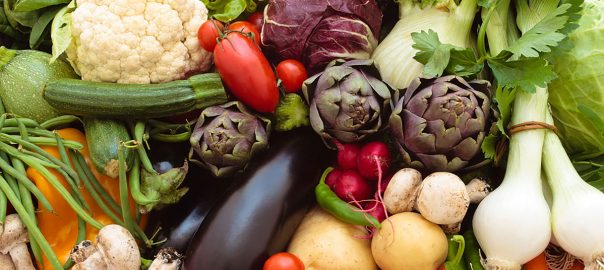
Find Seasonal Veg at the Right Time of Year
The Easy Guide to Finding Seasonal Vegetables
Have you ever been frustrated in the produce aisle of your grocery store because you just can’t seem to find a good quality head of lettuce? Or maybe the green beans are not looking as fresh as they did last month? This is due in large part to the fact that as the seasons change it affects the quality and freshness of the vegetables available across the country. Although you can always find the basic vegetables like lettuce and carrots year-round, there are always times of the year when you’ll find them to be at their freshest and highest quality.
In order to ensure you’re getting the best vegetables to stock your kitchen, there are a few things that you need to know. First, it’s important to know the types of vegetables that are sourced from local farmers, since these will always be the freshest due to the short distances they need to travel before they hit the shelves. Of course, this also means that they aren’t going to be available from those same farms all year long, especially in Canada. While southern farms in North America can easily grow crops 365 days a year, Canadian winters prevent it and greenhouses can only do so much.
Because of this, it’s helpful to know the best times of year for vegetables at your grocery store so that you can find those that have traveled the least amount of distance and have been stored for the shortest amount of time. In this article, we’ve gathered together a list of the most common and popular vegetables that you’ll find at supermarkets across the country and categorized them by the season in which they are harvested and shipped for maximum quality and freshness.
This information should help you find the best vegetables and assist you as you plan your weekly meal schedules. However, it should be taken as a general guide, as the freshness of the produce at your local supermarket may differ from those in other parts of the country.
Spring Vegetables
Once the snow melts and things start growing again, your local market will likely see a vast improvement in the freshness and quality of a wide range of vegetables that they stock year-round. These are generally some of the fastest vegetables to grow, and as such can start growing in northern climates much earlier in the year.
- Asparagus
- Broccoli
- Cabbage
- Artichokes
- Fennel
- Radishes
- Watercress
- Chives
- Rhubarb
- Green onions
Summer Vegetables
Once summer hits and the growing season is in full-swing across the country, the breadth of fresh vegetables provides a lot more choice and variety at your local market. During the summer season, you’ll find that all the greens are much fresher, as well as a wide range of root vegetables, herbs, and stalks.
- Peas
- Spinach
- Rutabaga
- Summer squash
- Zucchini
- Mustard greens
- Eggplant
- Cucumbers
- Cauliflower
- Broccoli
- Bok choy
- Bell peppers
- Tomatoes
Autumn Vegetables
After the long, hot summer, the vegetable selection will once again shift at your local markets to include those that require a longer growing season. Generally, these include gourds and squash, potatoes, and other larger and more dense vegetables.
- Beets
- Potatoes
- Squash
- Pumpkins
- Chili peppers
- Corn
- Leeks
- Brussels sprouts
- Tomatoes
- Spinach
- Onions
Winter Vegetables
While it may seem strange to list vegetables that are ‘in season’ in the winter, there are many vegetables that are still being harvested until late in the year, especially in the southern parts of Canada that experience more temperate climates.
- Sweet potatoes and yams
- Rutabagas
- Pumpkins
- Kale
- Leeks
- Turnips
- Winter squash
- Parsnips
- Beets
Other Factors to Consider
While this guide is intended to provide a helpful basis for you to understand when the optimum time of year is for certain types of vegetables, the reality is that there are many unpredictable factors that determine the freshness and quality of the produce that you’ll find at your own local market. Unexpected snowstorms, heatwaves, or droughts can drastically affect these trends across the country or in specific areas. Also, the larger supermarket chains will likely be sourcing their produce from a wide range of suppliers that can be located all across the globe, based on who has the best price, the largest supply, or the best quality at any given time.
Due to these other factors, there are a few things to keep in mind when at the supermarket that can help account for some of these unpredictable elements. Most produce sections will list where the vegetables were sourced, either on the pricing placard, with stickers on the vegetables, or on the cartons that hold the different vegetables on the shelves. Check the location on them and you’ll be able to see how far they traveled to get to your shelf. Chances are that a bag of grapes sourced from California is going to be fresher than those that came from somewhere in South America.
Again, it bears repeating that these are not rules that are set in stone. If your supermarket keeps Ontario vegetables on the shelf for three weeks and then gets a shipment from Texas that was picked last week, sometimes travel distance matters a lot less. Nevertheless, these tips should help provide a good foundation for your vegetable hunting trips through the produce aisle.
If you’re hungry for even more tips, we’ve also compiled a list of vegetables that are the best choices for low carb dieters, due to their low carb counts. Check out our article on the best fruits and vegetables for low carb diets.
Conclusion
When it comes to cooking delicious and healthy meals for your family, we know that you’ll always get the best results from the freshest ingredients, and that includes the vegetables you use. We hope that with this information, you will be better equipped to track down fresher and better-quality vegetables on your next trip to the grocery store. After all, a little patience and persistence when you’re moving up and down the aisles can really pay off once you start peeling, chopping, slicing and dicing to help you create a wonderful meal full of fresh flavours.






